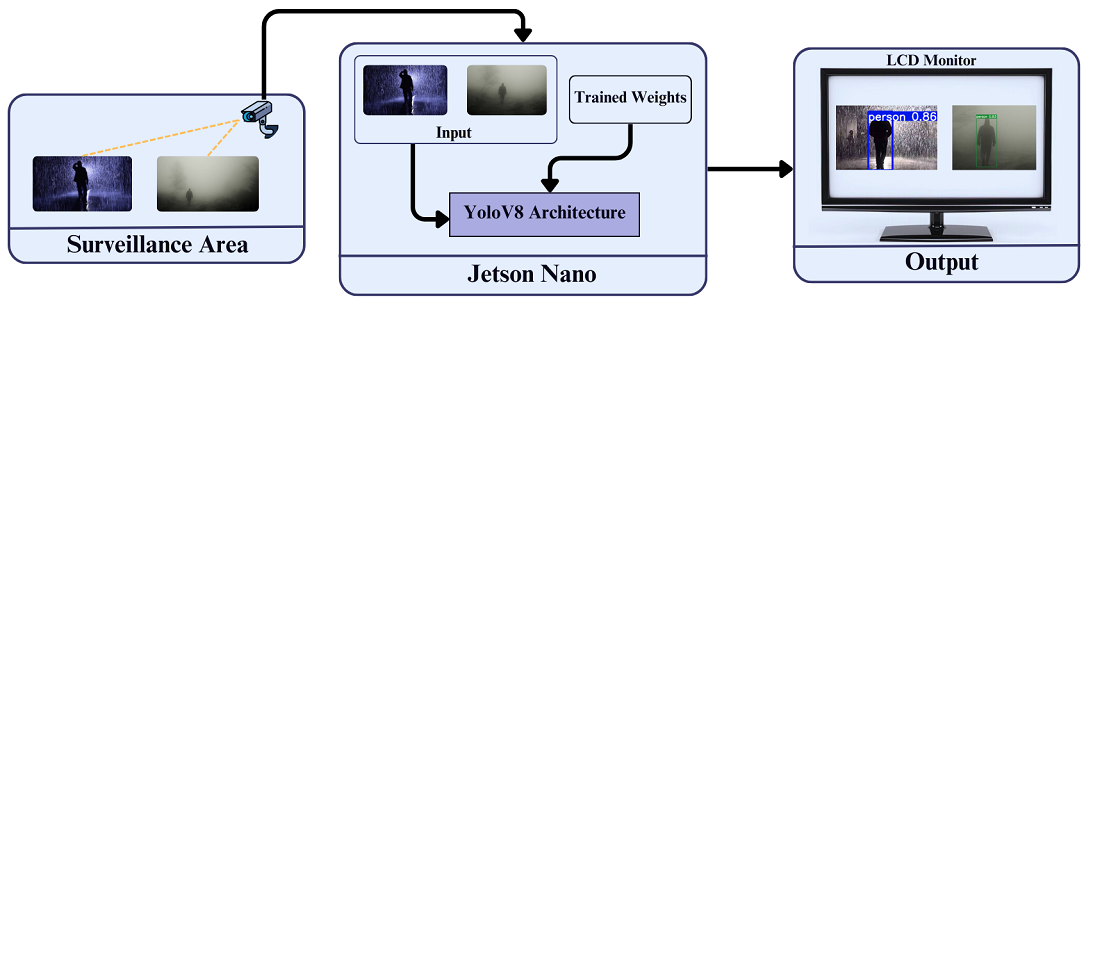Development of an energy-efficient cctv camera system for real-time human detection using YOLOv8 model
DOI:
https://doi.org/10.15587/1729-4061.2024.310401Keywords:
human detection, CCTV, deep learning, YOLOv8, NVIDIA Jetson nano, CSPNetAbstract
Human recognition is widely used in variety of fields such as autonomous vehicles, surveillance field, automatons, assisting blind peoples and many more. Many machine learning (ML) and deep learning (DL) algorithms exist for video analysis the main motive of these algorithms is to find human in complicated image. The research presented in this paper focuses on the development of an energy-efficient, smart CCTV camera system for real-time human detection, utilizing the YOLOv8 (You Only Look Once) model. The problem addressed is the need for more advanced, autonomous surveillance systems capable of human detection under various background conditions, overcoming the limitations of traditional CCTV systems, which require constant manual monitoring. The proposed system was trained on the PASCAL VOC 2012 dataset and optimized through hyperparameter tuning, achieving high accuracy and real-time performance. Key results demonstrate that the YOLOv8 model, implemented on the NVIDIA Jetson Nano platform, offers remarkable accuracy, precision, and energy efficiency. It consistently detects human figures in real-time, even in non-ideal conditions like poor lighting or complex backgrounds. This success can be attributed to YOLOv8’s cross-stage partial network (CSPNet) architecture, which enhances its ability to process images quickly and accurately, ensuring it meets the demands of continuous surveillance. The distinguishing features of this system are its energy-efficient design and adaptability to diverse environmental conditions. These characteristics not only solve the challenge of real-time human detection but also make the system a robust and scalable solution for modern security and surveillance applications

Downloads
Published
How to Cite
Issue
Section
License
Copyright (c) 2024 Meghana Deshpande, Alok Agarwal, Rupali Kamathe

This work is licensed under a Creative Commons Attribution 4.0 International License.
The consolidation and conditions for the transfer of copyright (identification of authorship) is carried out in the License Agreement. In particular, the authors reserve the right to the authorship of their manuscript and transfer the first publication of this work to the journal under the terms of the Creative Commons CC BY license. At the same time, they have the right to conclude on their own additional agreements concerning the non-exclusive distribution of the work in the form in which it was published by this journal, but provided that the link to the first publication of the article in this journal is preserved.
A license agreement is a document in which the author warrants that he/she owns all copyright for the work (manuscript, article, etc.).
The authors, signing the License Agreement with TECHNOLOGY CENTER PC, have all rights to the further use of their work, provided that they link to our edition in which the work was published.
According to the terms of the License Agreement, the Publisher TECHNOLOGY CENTER PC does not take away your copyrights and receives permission from the authors to use and dissemination of the publication through the world's scientific resources (own electronic resources, scientometric databases, repositories, libraries, etc.).
In the absence of a signed License Agreement or in the absence of this agreement of identifiers allowing to identify the identity of the author, the editors have no right to work with the manuscript.
It is important to remember that there is another type of agreement between authors and publishers – when copyright is transferred from the authors to the publisher. In this case, the authors lose ownership of their work and may not use it in any way.









